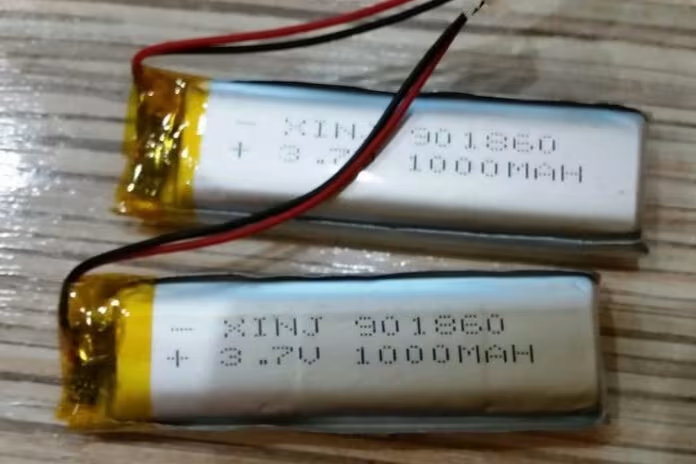The Convergence Revolution: How Multiple Technologies Are Reshaping Metal Detection
Twenty years ago, when I first started to get involved in metal detection systems, there were clear boundaries that defined the field. Search coils were simple electromagnetic devices, detectors ran on single frequencies, and signal interpretation was left to human expertise. Fast-forward to today, and I watch those boundaries dissolve as multiple technologies converge to create detection capabilities that, only a few years ago, would have seemed impossible. The Perfect Storm of Innovation.
But what really makes this moment in metal detection technology so interesting is that many of these complementary technologies are reaching maturity all at the same time. Artificial intelligence, multi-frequency detection, advanced search coil design, augmented reality, and autonomous systems are developing not in isolation but in harmony, creating possibilities greater than the sum of their parts.
I saw that convergence last month on an archaeological site in southern Europe. A small fleet of autonomous drones fitted with multi-frequency detectors swept in a systematic manner over the landscape. Their AI-enhanced detection systems piped data to tablets where augmented reality displays presented researchers real-time 3-D visualization of buried objects. What once would have taken weeks of careful manual surveying was accomplished in hours, with greater precision and detail than ever before possible.
The New Intelligence of Detection

The integration of artificial intelligence into metal detection systems probably constitutes the most fundamental change to the evolution of this field. It is not just a matter of AI making these processes more efficient, but the very way in which the challenge of finding and identifying buried objects is approached.
Modern AI can interpret these complex signals from multi-frequency detectors in ways human operators simply never could: picking out subtle patterns in the data, accounting for variables such as soil mineralization and environmental interference while performing increasingly accurate target identification. This becomes even more potent when combined with advanced search coil technology capable of gathering richer, more detailed data about buried objects.
Overcoming Physical Limitations
The development of sophisticated search coil technology has pushed through what we once thought were hard physical limitations. Today’s smart coils, incorporating advanced materials and digital signal processing, can achieve detection depths and discrimination capabilities that seemed impossible with traditional designs. Combining the advanced coils with multi-frequency operation, we get an unprecedented level of target information.
Recently, I tested a new detector that simultaneously processes signals across a spectrum from 1.5 kHz to 100 kHz. The system’s ability to characterize targets based on their responses across different frequencies, combined with AI-driven analysis, produces target identification accuracy that would have seemed like science fiction just a few years ago.
Making the Invisible Visible
Hitherto, augmented reality has solved one of the most nagging problems facing metal detection: the visualization of buried objects. By overlaying real-time detection data onto visual displays of the search area, AR systems have revolutionized how an operator interacts with his equipment and understands the findings.
When married with autonomous detection systems, this becomes a really powerful capability. Visualize how a drone surveys a site, builds a detailed 3D map of buried objects that you can see from any angle, complete with AI-generated predictions about each object’s identity and makeup. This is not some future speculative technology but is now in implementation across industries, from archaeology to utility mapping.
The Autonomous Revolution
It is more than just a different way to deploy sensors; it’s a whole new approach enabled by autonomous detection systems. Whether by ground-based robots or by aerial metal detecting drones, autonomous systems are able to survey an area with a consistency and thoroughness that human operators simply cannot.
With multi-frequency detectors and AI-driven analysis systems on board, such autonomous platforms become truly powerful for systematic survey work. Adding AR visualization capabilities will then transform the data they collect into readily usable information for human operators.
Look Ahead: Next Wave of Integration
Yet, these are increasingly maturing and integrating technologies that are opening up new possibilities. Swarm technology enables multiple autonomous units to work together cooperatively. Advanced sensor fusion combines metal detection with other sensing technologies such as ground-penetrating radar and multispectral imaging. Machine learning algorithms get better at interpreting complex data patterns and adapting to new conditions.
Perhaps most exciting, however, is the democratization of these technologies. What once required highly specialized expertise and very expensive equipment is becoming accessible to a far greater range of users. Modern systems are becoming easier to use even as they are becoming more capable.
The Human Element
But with all these technological strides, there is no shrinkage in the role of human expertise; it changes. The hours wasted in scanning and interpreting the signal repetitively can now be utilized for higher value decision making and analysis. It extends human capability rather than substituting for it.
Conclusion: A Transformed Landscape

Where AI meets advanced search coil technology, multi-frequency detection, augmented reality, and autonomous systems, the space of metal detection continues to change. Being a person who has seen years over years of change in this field, I have absolutely no doubt that we’ve moved beyond incremental improvements but are actually witnessing a fundamental re-imagining of what’s possible in metal detection.
The implications run far beyond traditional uses, from archaeological research and environmental remediation to security screening and infrastructure mapping-the integration of these technologies allows for new possibilities and more productive, effective solutions to long-standing challenges.
The reality is quite palpable: this convergence will continue to accelerate as we head into the future. It won’t be a question of if metal detecting technology continues to evolve but how we adapt our practices and procedures to fully leverage these new capabilities. For us professionals working within this field, it is now a great time to push the envelope.

My name is Paul and I am the founder of Detector For Metal, a dedicated resource for metal detecting enthusiasts seeking to uncover historical treasures and connect with the past using the latest technology. As a stay-at-home dad and family man, I’ve found metal detecting to be the perfect hobby that combines family adventure with historical learnings for the whole family.
As a father, I’m deeply committed to passing on this hobby to the next generation of detectorists, starting with my own children. I share advice on everything from metal detecting with kids to exploring the top 10 metal detecting sites you never thought about. My methodical approach to the hobby goes beyond the thrill of discovery—it’s about creating family traditions while preserving history and sharing the stories of those who came before us.


